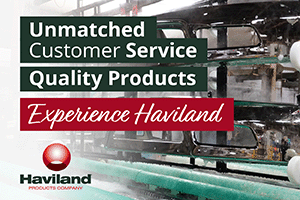Eric Svenson Sr. has been fighting the good fight to save hexavalent chromium processing for some time now.
The CEO and owner of Plating Resources in Florida — which offers chemicals, equipment, and technical services to finishers — is one of the few people in this world who will tell you how safe hexavalent chromium plating is if done properly.
His article on page 64 of this issue — The Fight to Save Hexavalent Hard Chrome — takes a very direct approach to what he sees as the main issue with why the process has been under attack by regulators across the world for several decades.
“Certain chemical suppliers want to eliminate Hex-Cr plating because there is more profit in the various replacement processes,” Svenson says. “This certainly is the case for the trivalent chrome baths because Hex-Cr uses relatively inexpensive chemicals.”
We’ll leave it to Svenson and the suppliers to duke it out if that is truly the case, but we know that one thing is for sure: many finishers who commented on Svenson’s article when we posted it to LinkedIn also had a similar sense of what has been happening to them.
“It is very clear what they are doing, and it is strangling the plating business,” one shop manager wrote. “Increases in costs of products and even larger increases for environmental waste disposal. 30% increase for waste disposal just this year in Washington State.”
Another shop owner says he is frustrated by the constant environmental attacks by regulators and wondered who in the industry was standing up to defend it.
“This is just the beginning unless something changes,” the owner says. “PFAS and hex; and nickel will be next. The questions to ask: Who stands to gain the most from this?”
And in something that I have not seen in quite some time, some shop owners took aim at the national finishing organization for not doing enough to stand up for an embattled industry that seems under almost constant attack.
They saw recently where California targeted hexavalent chromium use in finishing operations and where rules and legislation were passed to eliminate the process entirely.
“This shows how feckless our industry association is,” the owner says. “They’ve been talking for years about lobbying Capitol Hill and touting their success in the late 1990s and early 2000s. I think the industry at large can see the shrinking numbers turning out for association events and equate the lack of utility it purports to afford the national metal finishing base. What’s happening in California is a microcosm of what has already happened to the Rust Belt. I’m surprised more shop owners aren’t speaking up. It’s very perplexing.”
All of this is worthy of discussion, and it should bring a lot of people to the table to decide what they want their association to do.
“I don’t think they represents me at all, so I stopped my membership,” one shop told me recently.
If you don’t think the the national organization is representing you, then perhaps change the focus of the group. Maybe run for the board — which I am not even sure how one does that these days — and evoke change.
But finishers feel unguarded, and perhaps they are right. Change may be coming in more ways than one.





 Tim Pennington is Editor-in-Chief of Finishing and Coating, and has covered the industry since 2010. He has traveled extensively throughout North America visiting shops and production facilities, and meeting those who work in the industry. Tim began his career in the newspaper industry, then wound itself between the sports field with the PGA Tour and marketing and communications firms, and finally back into the publishing world in the finishing and coating sector. If you want to reach Tim, just go
Tim Pennington is Editor-in-Chief of Finishing and Coating, and has covered the industry since 2010. He has traveled extensively throughout North America visiting shops and production facilities, and meeting those who work in the industry. Tim began his career in the newspaper industry, then wound itself between the sports field with the PGA Tour and marketing and communications firms, and finally back into the publishing world in the finishing and coating sector. If you want to reach Tim, just go 






















